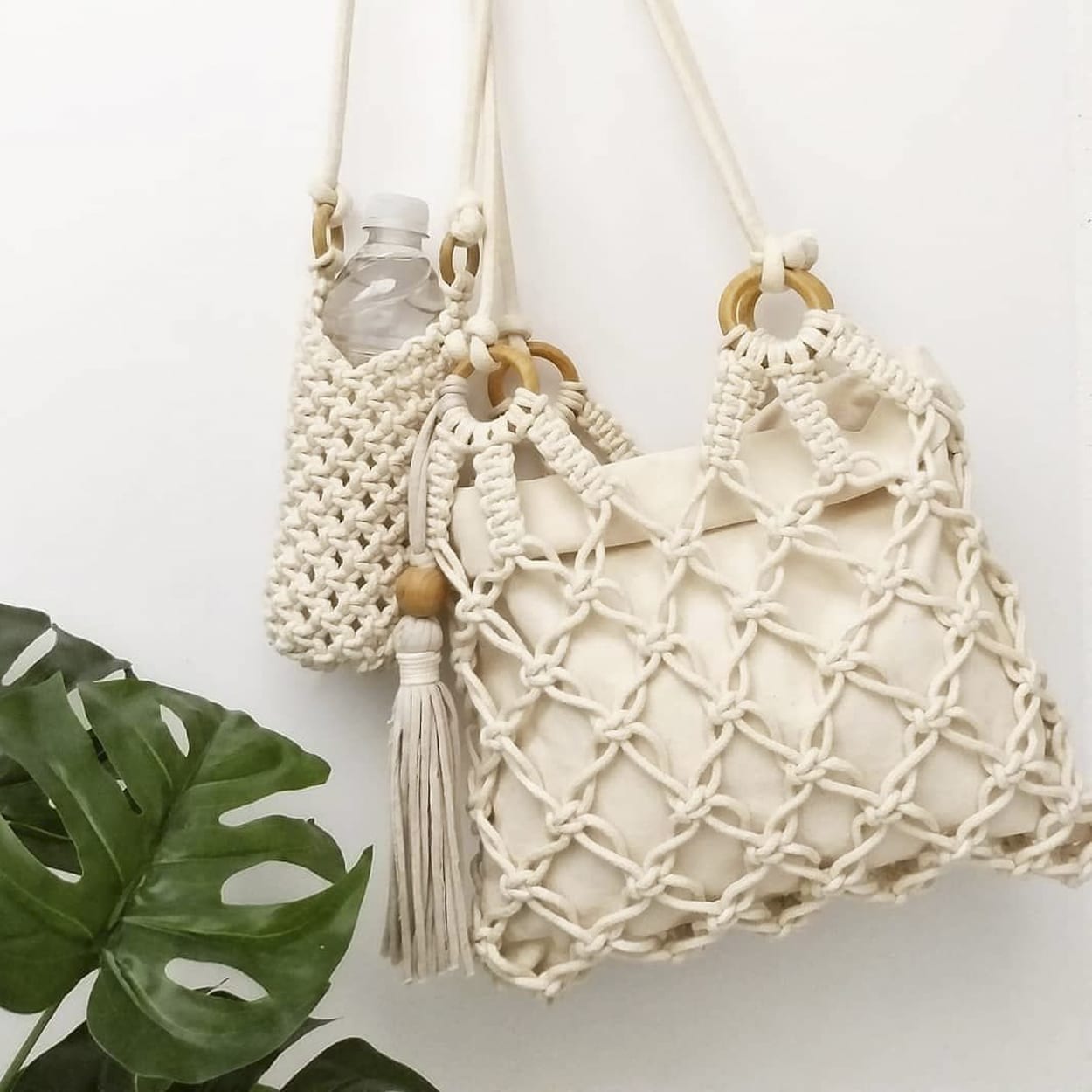



The name is thought to come either from the Arabic word “migramah”, meaning ornamental fringe, or the Turkish word “makrama”, meaning napkin or towel.
During the 13th century, in northern Africa, these decorative fringes were used to help keep flies off of horses and camels. Arabic fringed textiles made their way to Europe and inspired others to begin experimenting with knot making as a pastime. In the 17th century, Queen Mary II taught her ladies-in-waiting how to use macrame knotting techniques.
In the 18th century, it was also popular with sailors, who would create macrame objects during their free time at sea and then either sell or barter them once they landed. As they travelled to different ports, this helped to spread knot knowledge across the world.
Macramé was especially popular during the Victorian era, where it was used in home textiles like tablecloths, bedspreads, and curtains.
It experienced a resurgence in the early 1970s in The United States and Europe, becoming a popular pastime and home decor trend. Textile artists experimented and applied the technique to various types of products, which included wall hangings, clothing, accessories, home textiles, plant hangers, and other furnishings. Moving into the late 1970s, the pervasiveness of macramé eventually led to it being seen as kitsch and outdated.
With the rise of Instagram, macrame was resurrected as part of the growing DIY and craft movement, offering a simple way for people to decorate on a budget. Because it can be used for everything from plant hangers to wall decor, it has gained increasing visibility and popularity both on and off the platform.
Macramé can be applied to all types of projects, offering an enormous range of creative possibilities. Here is a few of them:
You can find other tutorials of every project on youtube, printerest and blogs. You just have to search and start crafting. 😀
Usually that depends on the macrame project you want to make. But to get started the supplies you will need are:
Find more here for detailed information about the best tools and materials for your
projects.
(It's not the only source, the internet is full of
information about this craft, you just have to find what works best for
you 😀)




Macrame is a form of textile produced using knotting (rather than weaving or knitting) techniques. There are various types of knots that can be used, and they can be combined in an infinite number of ways to create both functional and aesthetic pieces.
It is known from research done at the University of California that reading and craft arts are intended to exercise the brain and prevent dementia. Speaking of macramé, moving the lines provides a direct action with the nerve endings of the finger tips, called thin musculature. These endings are directly connected to our brain that is exercised by practicing these movements. In this way, it causes wonderful effects to our body, such as increased sensitivity, memory exercise or even a decrease in memory failures.
So the list below are a few benefits that macrame can provide you with.